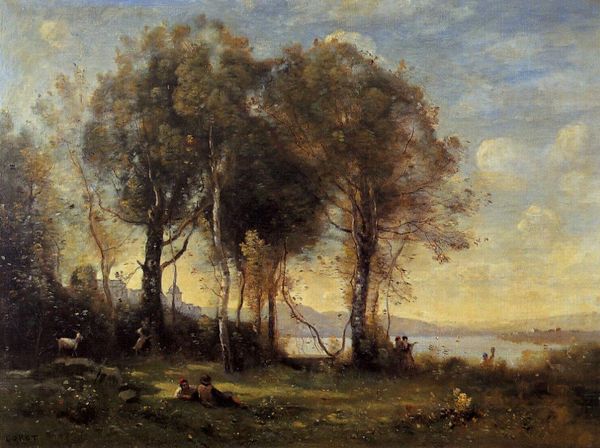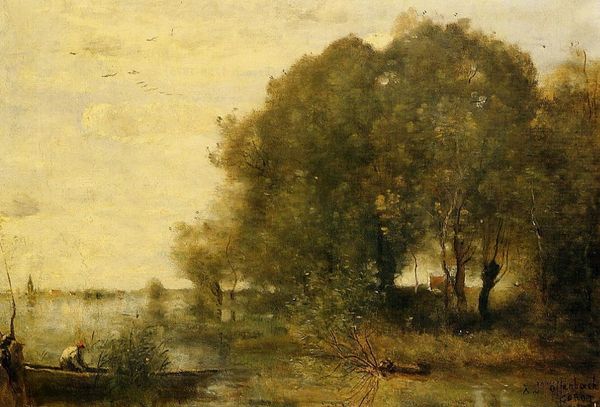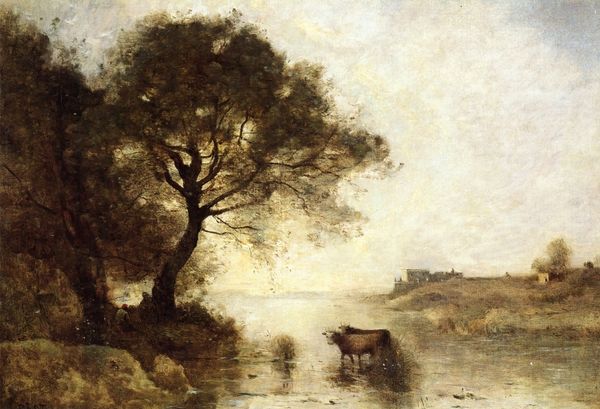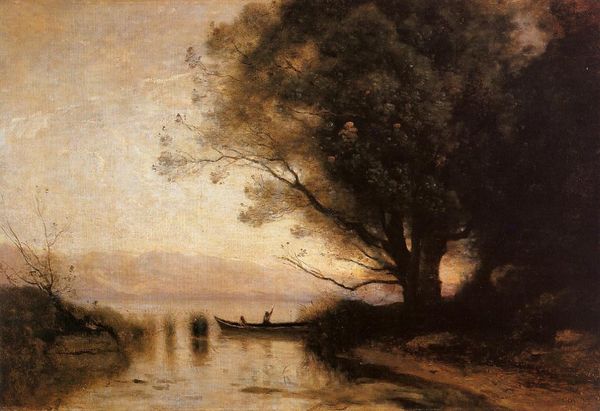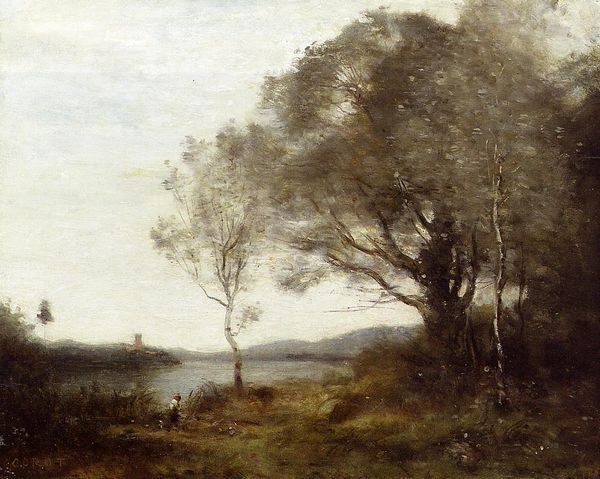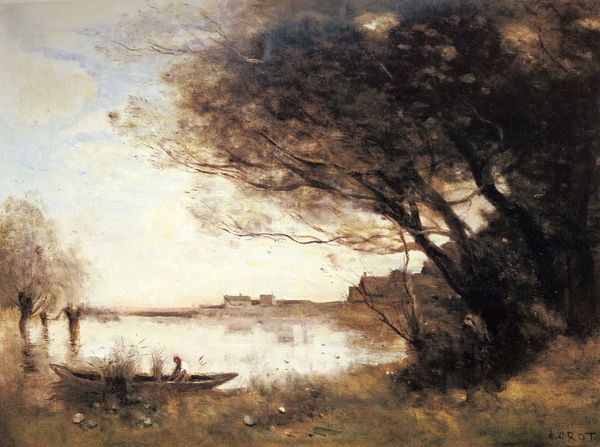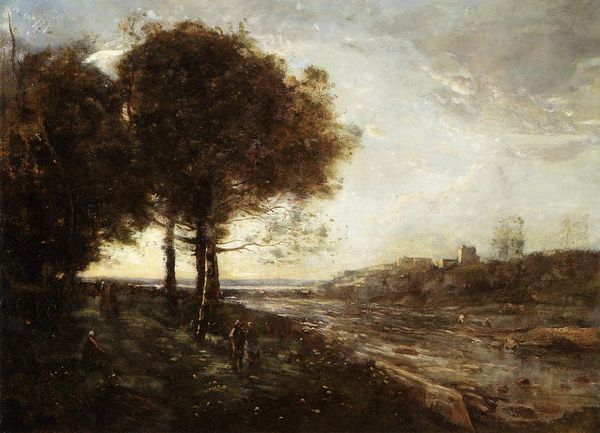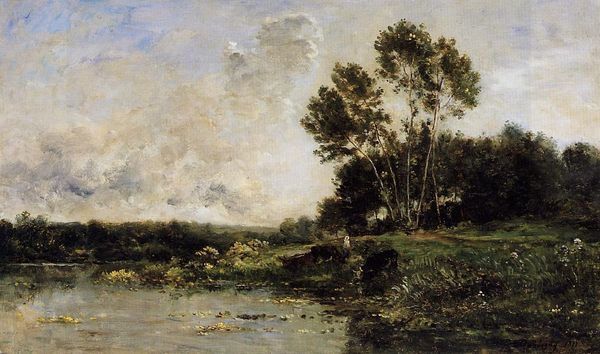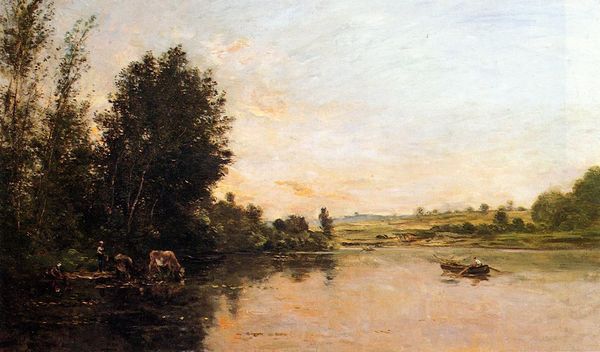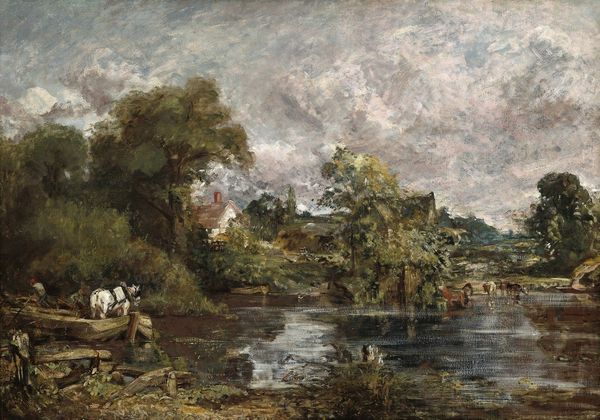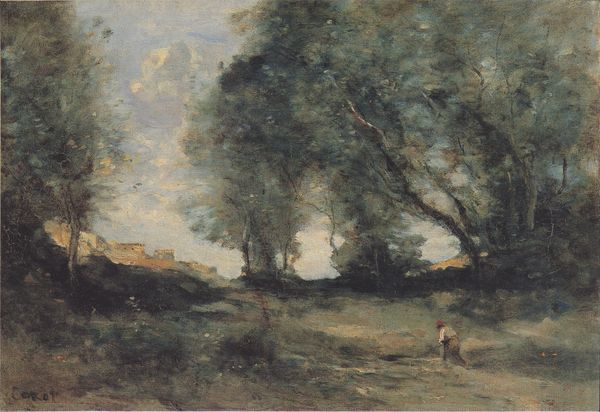
Copyright: Public domain
Curator: Editor: Looking at Corot’s "Pond with Dog," created around 1860 with oil on canvas, I am really drawn to the textures he creates, that interplay of light, almost giving it a hazy feeling, and there is, literally, a dog. How do you read this piece? Curator: Well, let’s consider the “en plein air” technique Corot employs. Painting outdoors like this connects the artist directly to the materiality of the landscape, the changing light, and even the weather conditions. It speaks to the artist's labour and interaction with their tools, wouldn't you say? Think of the implications on availability, manufacturing of materials and social implications related to artistic patronage that would enable Corot to create “Pond with Dog.” How accessible do you imagine “en plein air” as a mode of production to the common person during that time? Editor: It feels exclusive, almost as if it’s reserved for the bourgeoisie with their ability to move freely. But, the landscape seems untouched by any of that… is that an illusion? Curator: That’s a really keen insight. The romantic style, particularly within landscape, often idealizes and obscures those real-world implications like ownership and labor. Corot's "natural" scene is still very much a product of a certain socio-economic position, allowing him the leisure and the means to pursue this form of art-making. Editor: So, even as Corot paints “nature,” his work reflects and is constructed by social factors influencing its production. Thank you! I see this in a completely new way. Curator: Exactly! And by understanding those factors, we move beyond the surface representation and grapple with the complex conditions that give art its meaning.
Comments
No comments
Be the first to comment and join the conversation on the ultimate creative platform.
